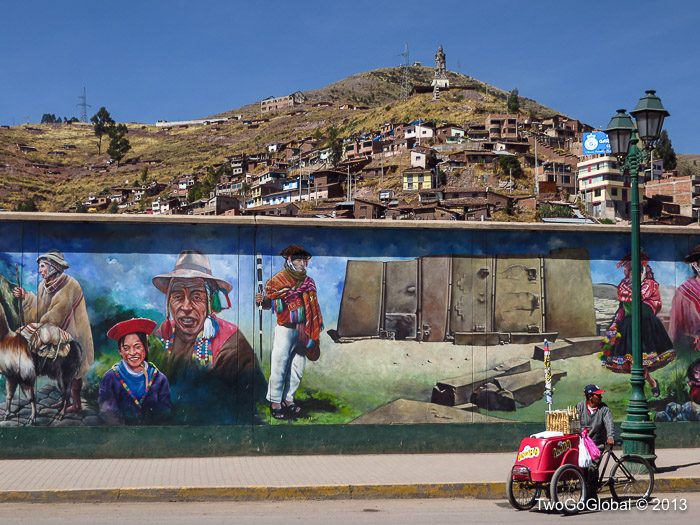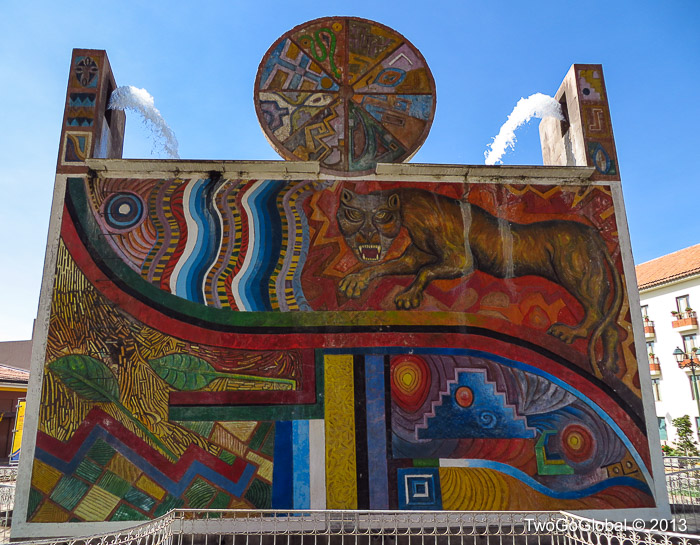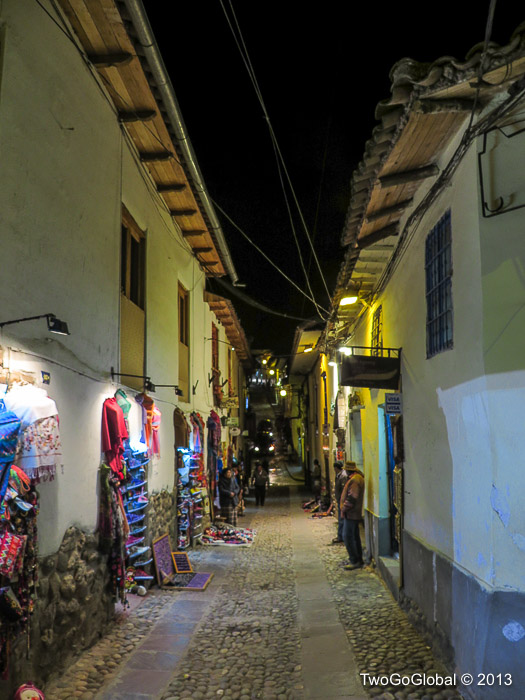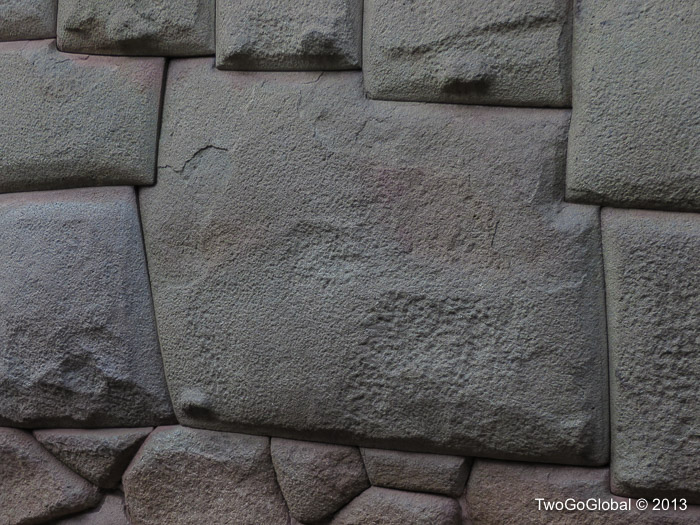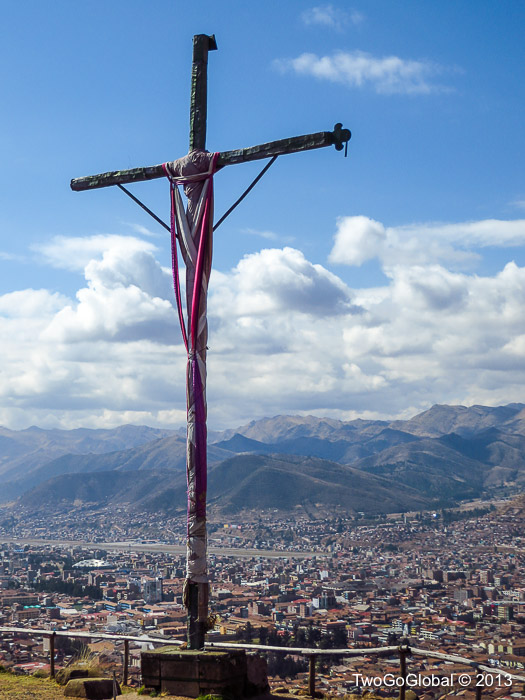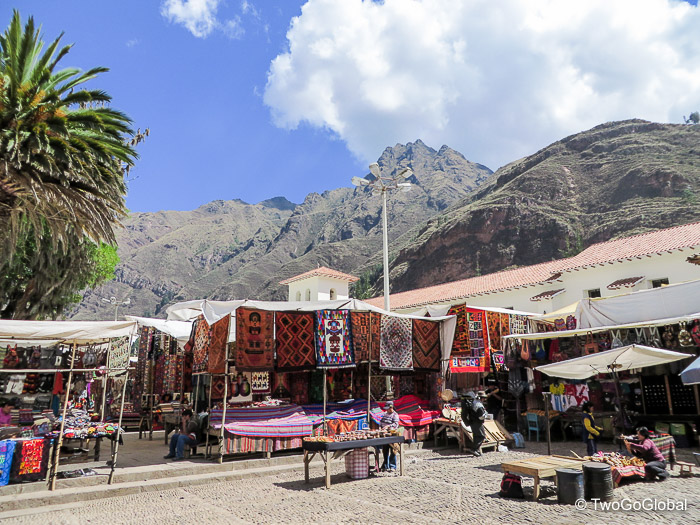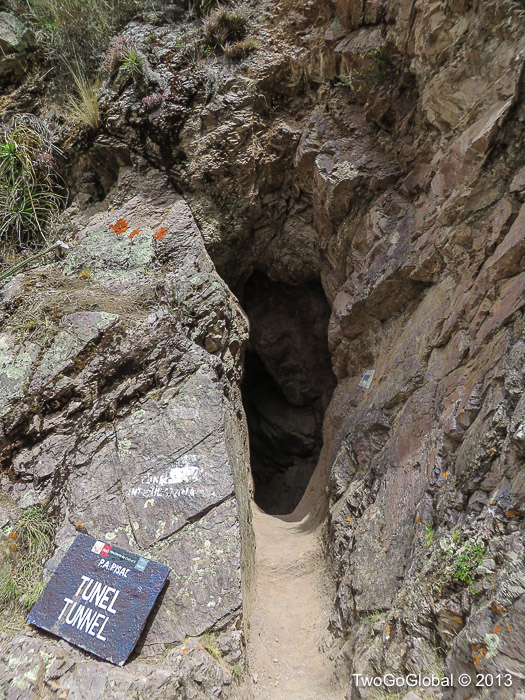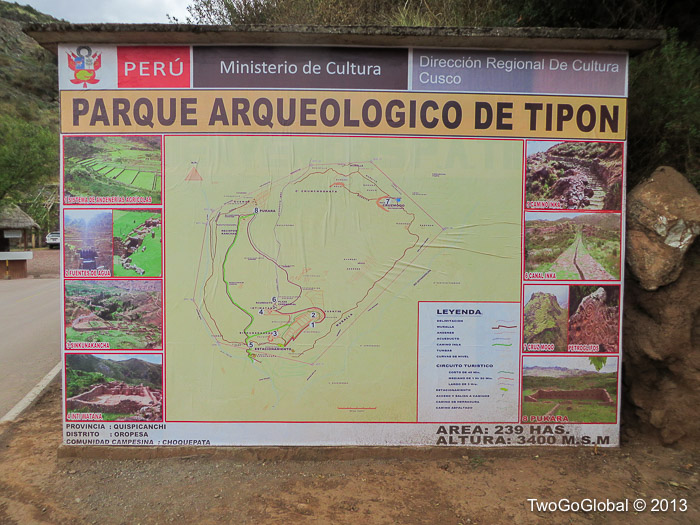Puno and all of Bolivia were far cheaper than Cusco, although with the additional expense came an amazingly clean, prosperous, and colonial city, one that I found exhilarating. We had two days in Cusco prior to the start of the Inca trail trek and another five days on our return. Judging by the Inca ruins and attractions in the vicinity I was not going to get bored! On our arrival we had no choice but to familiarize ourselves with the city, at least with the decent parts, and find Peru Rail, Peru Treks, Wayka Treks and the Machu Picchu offices – Inca trail, Machu Picchu tickets and briefings were awaiting us.
Cusco was the capital of the Incan empire until the Spanish arrived in the year 1534 and threw a spanner in the works! The Spanish influence is definitely obvious nowadays with amazing churches, a cathedral and narrow colonial streets, with far less Inca infrastructure showing in the city itself. Outside of the city ruins abound in all directions, with the mac daddy of them all, Machu Picchu being only a hundred and twenty kilometers away by train. I was excited and eager to explore.
We were on a high, albeit shattered after getting back on the train from Machu Picchu – the hotel we stayed at prior to leaving had moved us to another room as suite five was already reserved. We had no windows, and although the room was still nice we wanted our old room back. I told Andrea we only had to put up with this for two nights as we had no choice!
I only had 4 days to explore and like I said, Cusco is a tourist trap so gaining entry to the cities museums, cathedral and the surrounding area ruins was not going to come cheap. I could either pay seventy Soles a day to enter many of the different sights or buy a ten day pass for one hundred and thirty Soles, or around fifty Dollars. This allowed access to pretty much all the ruins in the towns along the Sacred Valley, a a couple of the museums and churches in the city, although strangely enough not the Cathedral, which was another twenty five Soles each, and a few of the other historical sights. I bit the bullet and bought the pass and first thing Tuesday I headed out on the first of my three daily outings…
Saqsayhuaman, Qénqo, Pukapukara & Tambomachay
These four sets of ruins are within walking distance of the city and after covering eighteen kilometers I had seen them all, and as a bonus I found some very neat tourist shops on my travels. Couldn’t wait to drag Andrea back to them after work this same night, which as I thought totally paid off with us buying gifts for ourselves and friends and family back home. The ruins themselves were pretty small and low key, with the exception of Saqsayhuaman, perfectly pronounced as “Sexy Woman”, which was pretty amazing with the largest and most perfectly placed stones I had seen so far.
Fortunately nothing in this area is too far away by bus so I went for two locations today, beginning in Chinchero at around twenty eight kilometers from Cusco. As well as the towns ruins there is a thriving farmers market (except on the day that I visited!) and the ancient Inca trail from Cusco to Machu Picchu passes through. I chose not to hike the ancient trail and go spend a couple hours exploring the ruins instead. Once again the Inca folk amaze me, this time with the accuracy and amount of terraces at this site. Used for agriculture, where the different levels give micro-climates, with every terrace or two bringing a change in temperature, allowing for a wide range of planting options.
Today for me was all about getting my second serving of Cuy, or guinea pig for all you pet lovers. Tipón is supposedly the place to go for getting a tender young specimen that has been stuffed with a special local herb called huaycatay. First off I headed to Pisac for yet more Inca ruins, where I was pleasantly surprised when I arrived in the midst of the Thursday market, sadly aimed mostly at tourists. The place was packed with tour buses full of all nationalities trying to find that special Peruvian sweater or silver Inca warrior – I had to get out fast and hit the trails. After seeing signs displaying almost ten kilometers to the ruins I was concerned that I would be paying for private transportation, something that changed as soon as I came across the local tourist information office. All I had to do was walk straight up the steep hill behind the market and follow the trails, perfect.
September 2nd – September 13th 2013


